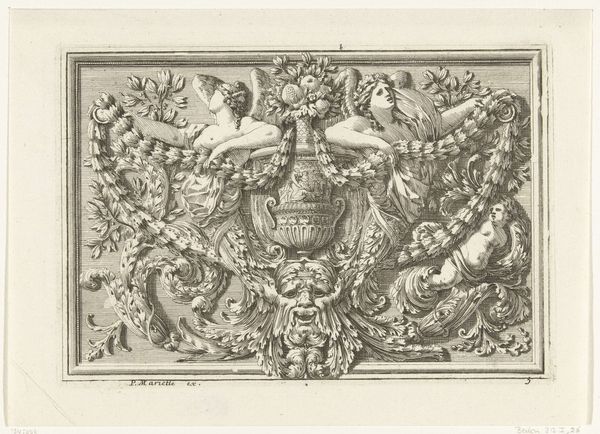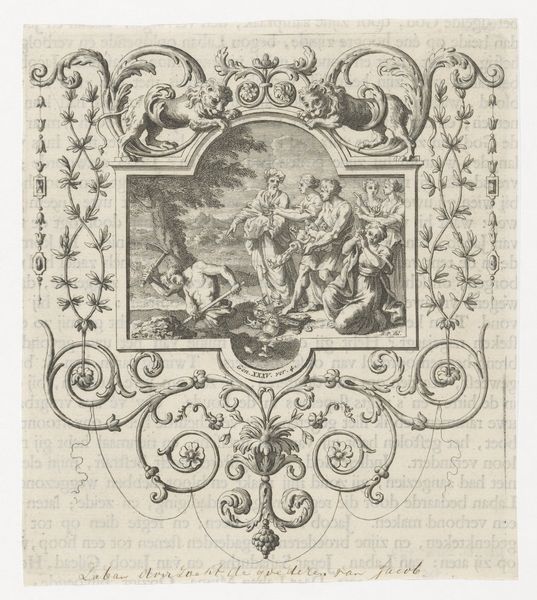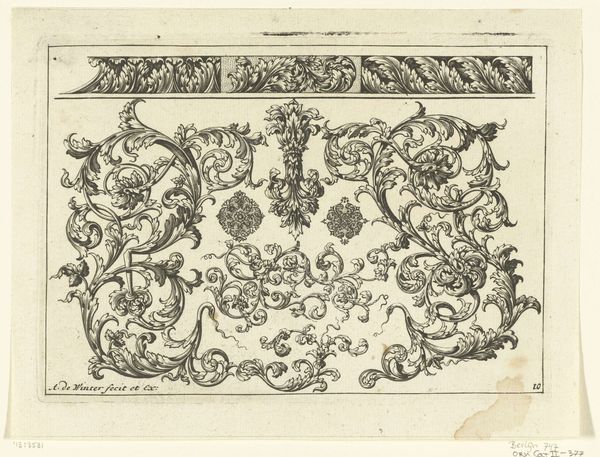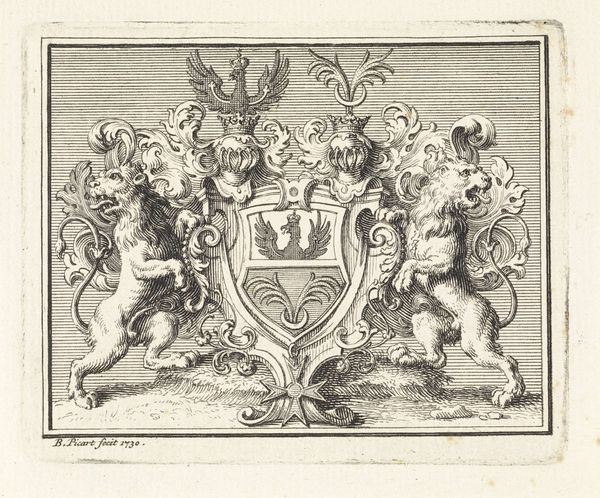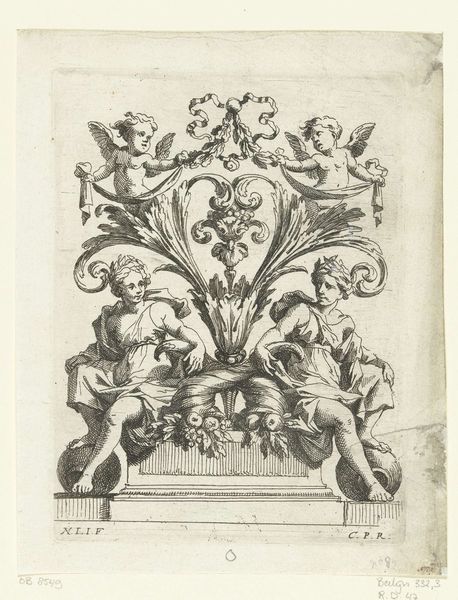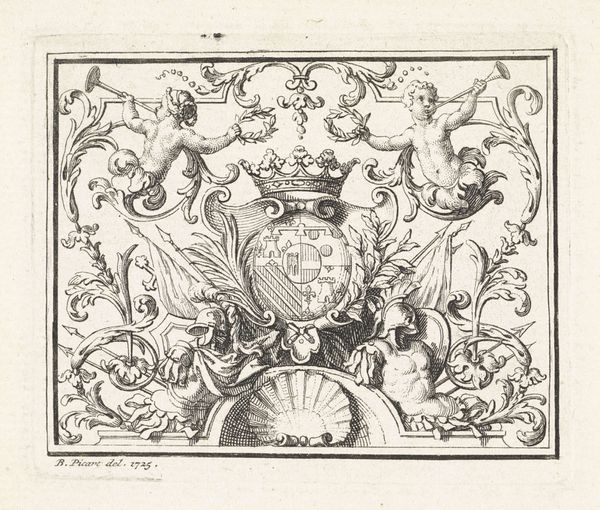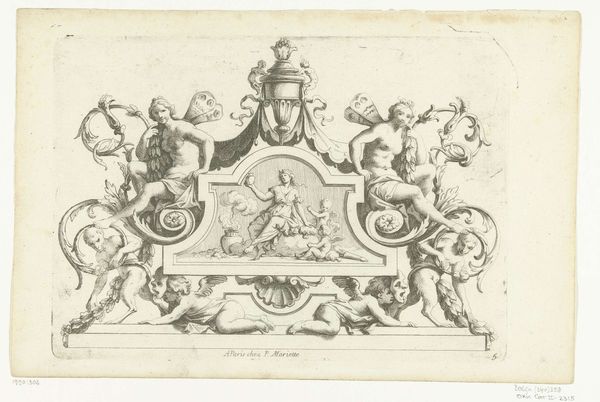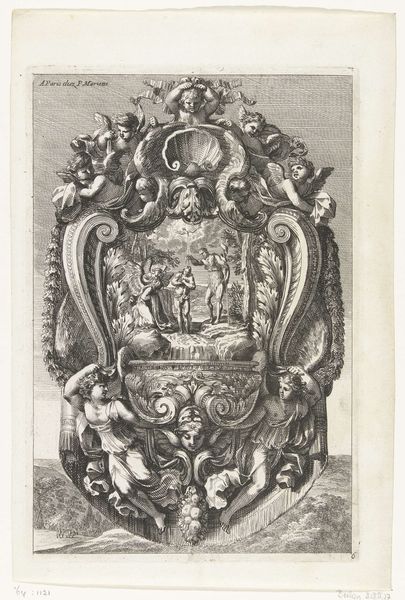
drawing, engraving
#
drawing
#
allegory
#
baroque
#
mythology
#
engraving
Dimensions: height 173 mm, width 223 mm
Copyright: Rijks Museum: Open Domain
Curator: What a fascinating engraving! This is an octagonal panel depicting Orpheus and Eurydice, dating from around 1670-1680, and it's currently held in the Rijksmuseum collection. The artist is Alexis Loir. Editor: My initial impression? The ornate frame almost overwhelms the central scene. It feels very decorative, and the narrative gets a bit lost in the embellishments. Curator: That frame is integral. We have these satyrs, putti playing instruments—all pointing to a specific socio-economic context. These kinds of prints were often made as designs for other objects, intended for consumption by the wealthy. They speak to the decorative tastes of the time. Editor: Agreed, the framework undeniably dominates and informs. Structurally, it leads the eye around the whole composition, before ever resting at the supposed focal point – Orpheus and Eurydice. Note how Loir uses contrasting diagonal lines in the central image versus more orderly parallel lines surrounding it. The central panel also serves as a stage. Curator: Absolutely, and the medium itself, engraving, is key. Think about the labor involved in producing such a detailed image, the specialized skills required. This wasn't a cheap or easily accessible artwork, even as a print. The labor echoes through the print to communicate value to a certain public, beyond just illustrative representation of the mythological allegory. Editor: Indeed, the mythology functions within the larger frame, literally! Orpheus’ story is about the power of music and love's tragic limitations, rendered through highly refined technical skill. Notice how the artist meticulously used the stylus to add dark contours and tonal gradations for three-dimensionality, with very high contrast along the human bodies versus muted hatching along the framing components. Curator: Precisely. And the choice of subject matter – Orpheus's journey to the underworld to reclaim his lost love - would have resonated with contemporary audiences steeped in classical literature and allegorical imagery. There's also something here, within that market, that speaks about elite forms of knowledge, luxury material, taste, and performance— the display of erudition, if you will. Editor: The drama and sorrow feel almost secondary. But even so, considering semiotic layers that allude to larger universal human conditions that permeate time – love, grief, loss. Curator: A final thought for me: it highlights the commodification of even tragic narratives within elite social circles. We consider the material existence of such a print in relation to the tale it illustrates— it's not separate, but entwined. Editor: Yes, in that sense, we see Loir presenting us a commentary in the visual idiom through highly structured methods. Thank you.
Comments
No comments
Be the first to comment and join the conversation on the ultimate creative platform.
